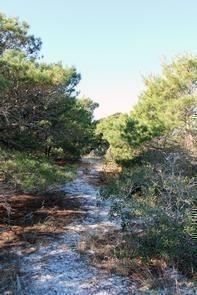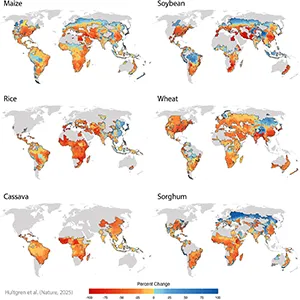BLM seeks input on Meadowood proposed sensory nature trail – Bureau of Land Management (.gov)

Project Overview: Proposed Sensory Nature Trail at Meadowood Special Recreation Management Area
Introduction
The Bureau of Land Management (BLM) has issued a draft environmental analysis for a proposed sensory nature trail within the Meadowood Special Recreation Management Area in Lorton, Virginia. The project is designed to enhance public land access, with a specific focus on creating an inclusive environment for individuals with autism, sensory processing disorders, and other neurodevelopmental disorders. This initiative represents a significant step in developing universally accessible recreational infrastructure.
Proposed Trail Features
- A 1-mile accessible trail designed for sensory engagement.
- Up to six interactive activity stations located along the trail.
- Installation of bench seating and a trailhead kiosk for information and rest.
- Potential development of a connector trail to integrate with Meadowood’s existing 13.4-mile trail system.
- Construction of a designated parking area and an access road to support the new facility.
Alignment with United Nations Sustainable Development Goals (SDGs)
The proposed development strongly aligns with several key UN Sustainable Development Goals, reflecting a commitment to social equity, environmental stewardship, and community well-being.
SDG 3: Good Health and Well-being & SDG 10: Reduced Inequalities
By creating a purpose-built recreational space for individuals with neurodevelopmental disorders, the project directly supports SDG 3 by promoting mental and physical well-being through nature-based sensory experiences. Furthermore, it advances SDG 10 by actively reducing inequalities in access to public recreational facilities, ensuring that public lands are welcoming and enriching for all community members.
SDG 11: Sustainable Cities and Communities
The initiative contributes to Target 11.7 of SDG 11, which aims to provide universal access to safe, inclusive, and accessible green and public spaces. The sensory trail is a tangible effort to make the 804-acre Meadowood Special Recreation Management Area a more inclusive and sustainable community asset.
SDG 15: Life on Land & SDG 17: Partnerships for the Goals
The development is guided by a draft environmental analysis, ensuring the project’s execution is environmentally responsible and protects the local ecosystem, in line with SDG 15. The project’s design process embodies SDG 17 by fostering partnerships. The BLM has actively engaged the local autism community, partners, and the public through workshops and public comment periods to ensure the final design reflects the community’s needs and voices.
Public Consultation and Project Development
Stakeholder Engagement
Initial project design elements were informed by feedback from a field-based workshop held on May 3, 2025, and a subsequent virtual meeting on May 29, 2025. These sessions allowed BLM staff to collaborate with representatives from the local autism community, partner organizations, and the public to discuss potential trail alignments and sensory activity stations.
Call for Public Comment
The BLM is soliciting public comment to inform the final design and location of the trail. Feedback on the draft environmental analysis is critical to ensuring the project’s success.
- Submission Deadline: All comments must be received by August 27, 2025.
- How to Submit:
- Online: Comments and project documents are available on the BLM National NEPA Register.
- Mail: Bureau of Land Management – Northeastern States District, Lower Potomac Field Station, 10406 Gunston Road, Lorton, Virginia 22079.
1. Which SDGs are addressed or connected to the issues highlighted in the article?
The following Sustainable Development Goals (SDGs) are relevant to the article:
- SDG 3: Good Health and Well-being: The article discusses the creation of a sensory nature trail designed to be enriching and provide recreational opportunities, which contributes to mental and physical well-being.
- SDG 10: Reduced Inequalities: The primary purpose of the trail is to “improve public land access for all users, especially individuals with autism, sensory processing disorders, and other neurodevelopmental disorders,” directly addressing inequality in access for persons with disabilities.
- SDG 11: Sustainable Cities and Communities: The project focuses on developing safe, inclusive, and accessible green public spaces. The public consultation process mentioned also aligns with inclusive community planning.
- SDG 17: Partnerships for the Goals: The article highlights the collaboration between a government agency (Bureau of Land Management) and “representatives from the local autism community, partners, and the public” to achieve the project’s goals.
2. What specific targets under those SDGs can be identified based on the article’s content?
Based on the article, the following specific SDG targets can be identified:
-
SDG 3: Good Health and Well-being
- Target 3.4: Promote mental health and well-being. The article states the trail is designed to be “welcoming and enriching for all who visit” and is part of a larger recreation area that offers opportunities for “hiking, biking, horseback riding,” which are activities that promote physical and mental health.
-
SDG 10: Reduced Inequalities
- Target 10.2: Empower and promote the social inclusion of all, irrespective of disability. The trail’s explicit design to be accessible for “individuals with autism, sensory processing disorders, and other neurodevelopmental disorders” is a direct action to promote their social inclusion.
-
SDG 11: Sustainable Cities and Communities
- Target 11.7: Provide universal access to safe, inclusive and accessible, green and public spaces, in particular for persons with disabilities. The project involves developing a “1-mile accessible trail” in the “Meadowood Special Recreation Management Area,” a public green space, specifically to improve access for all.
- Target 11.3: Enhance inclusive and sustainable human settlement planning and management. The article describes a participatory planning process where the BLM “seeks public comment” and held a “field-based workshop” and a “virtual meeting” to ensure the design reflects the “needs and voices of the community.”
-
SDG 17: Partnerships for the Goals
- Target 17.17: Encourage and promote effective public and civil society partnerships. The article mentions the BLM’s collaboration with “representatives from the local autism community, partners, and the public” as essential to the project’s development.
3. Are there any indicators mentioned or implied in the article that can be used to measure progress towards the identified targets?
The article mentions or implies several indicators for measuring progress:
-
For Target 10.2 and 11.7 (Inclusion and Access):
- Indicator (Mentioned): The creation of accessible infrastructure. The article specifies the development of a “1-mile accessible trail,” “bench seating,” a “designated parking area,” and an “access road.” These are tangible outputs that measure progress.
- Indicator (Implied): The number of accessible recreational facilities. The article states this sensory trail is the “first of its kind within the BLM,” indicating a baseline from which future progress can be measured.
-
For Target 11.3 (Participatory Planning):
- Indicator (Mentioned): The existence of structures for direct public participation in planning. The article explicitly mentions the mechanisms used: a public comment period open until “Aug. 27, 2025,” a “field-based workshop,” and a “virtual meeting.”
-
For Target 17.17 (Partnerships):
- Indicator (Implied): The number and type of partnerships formed. The article identifies a partnership between a government body (BLM) and civil society groups (“representatives from the local autism community, partners, and the public”).
4. Table of SDGs, Targets, and Indicators
| SDGs | Targets | Indicators Identified in the Article |
|---|---|---|
| SDG 3: Good Health and Well-being | 3.4: Promote mental health and well-being. | Provision of enriching recreational opportunities (sensory trail) within a public recreation area. |
| SDG 10: Reduced Inequalities | 10.2: Promote the social inclusion of all, irrespective of disability. | Development of a trail specifically designed for individuals with autism, sensory processing disorders, and other neurodevelopmental disorders. |
| SDG 11: Sustainable Cities and Communities | 11.7: Provide universal access to safe, inclusive and accessible, green and public spaces for persons with disabilities. | Construction of a “1-mile accessible trail,” “designated parking area,” and “access road” in a public recreation area. |
| 11.3: Enhance inclusive and sustainable human settlement planning. | Implementation of direct public participation structures (public comment period, workshops, virtual meetings). | |
| SDG 17: Partnerships for the Goals | 17.17: Encourage and promote effective public and civil society partnerships. | Collaboration between the Bureau of Land Management (public) and the local autism community/advocacy groups (civil society). |
Source: blm.gov

What is Your Reaction?
 Like
0
Like
0
 Dislike
0
Dislike
0
 Love
0
Love
0
 Funny
0
Funny
0
 Angry
0
Angry
0
 Sad
0
Sad
0
 Wow
0
Wow
0













































































